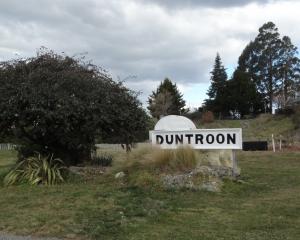A water management plan for the lower Waitaki catchment and the Waimate district has won approval from Environment Canterbury, one of the authorities that set up the community committee to prepare it.
The Lower Waitaki South Coastal Canterbury Zone Implementation Programme has been formally endorsed by Environment Canterbury commissioners. Both the Waitaki and Waimate district councils, also involved in the project, have already received and accepted the programme.
The programme represented the consensus reached by committee members on the local actions needed to improve water management in the zone, Environment Canterbury Commissioner Peter Skelton, also a member of the committee, said.
"This consensus also took into account the wide range of views from local people and organisations canvassed by the zone committee during the development of the programme," he said.
The programme sits within the Canterbury Water Management Strategy, which is putting in place a collaborative system to manage water based around a shared vision of gaining the greatest benefits from water within a sustainable framework.
Zone committee chairman Robin Murphy said the committee had taken a "whole of waterways" approach to integrate water management from the mountains to the sea.
This included the Maori principle of kaitiakitanga, which was reflected in the recommendations to improve water quality and quantity, provide more customary use, and involve runanga in water management.
There were six priority topics in the programme.
Both the Lower Waitaki River and the Hakataramea catchment were priority areas.
For the Lower Waitaki River, the recommendations started with the development of an iwi management plan for the catchment, and covered the river mouth, in-stream values and braided river character, reliability of water, electricity supply, water quality issues and recreational amenity.
For the Hakataramea, the local community wanted a catchment management plan and improved water flow and reliability.
Restoration of Wainono Lagoon was another priority.
"Improving the biodiversity of coastal lagoons, lowland streams, springs, river mouths and wetlands is another priority area," Mr Murphy said.
There were priority recommendations around improving drinking water quality and finding additional sources of drinking water for communities, along with water and nutrient management.
The programme recommended setting environmental flows for all rivers in the zone, doing more scientific work to understand ground water, and assessing reliable water-supply options in the northern part of the zone.
While the programme was being prepared, the committee identified some additional work streams and gaps in knowledge that would be addressed in this year's work programme, including gravel extraction, the management of stock water races, storm-water management, drainage management and flood management.












